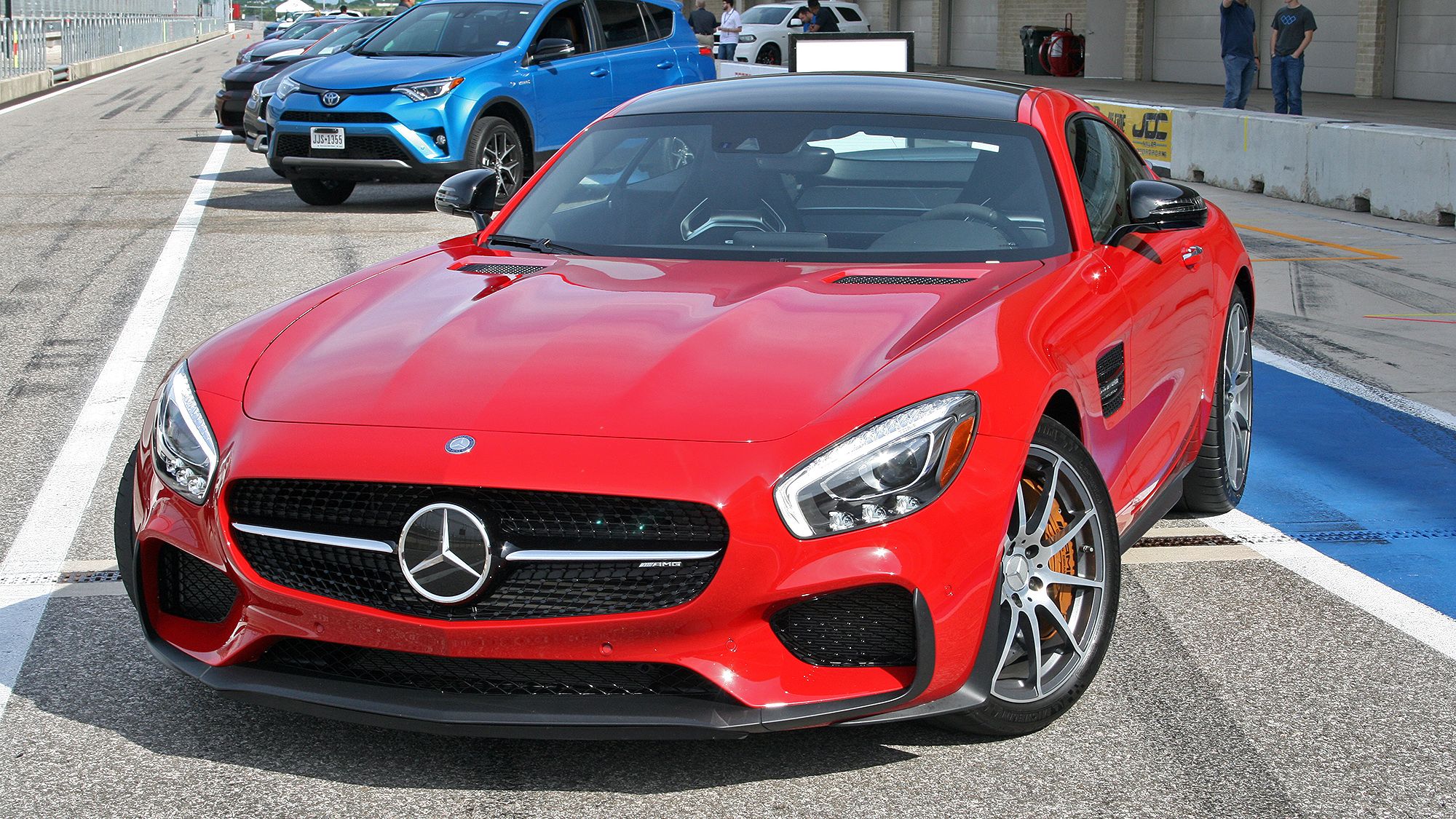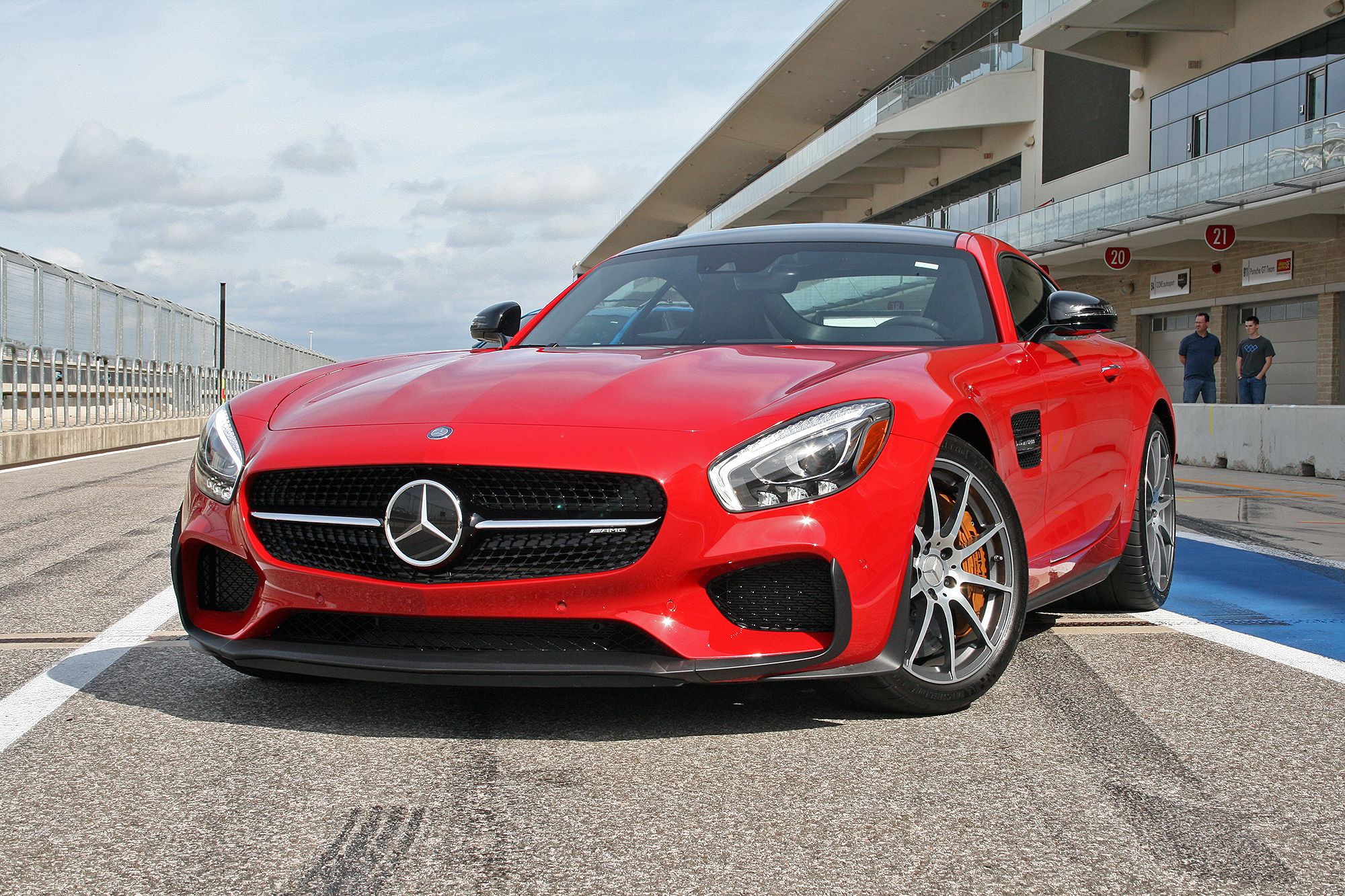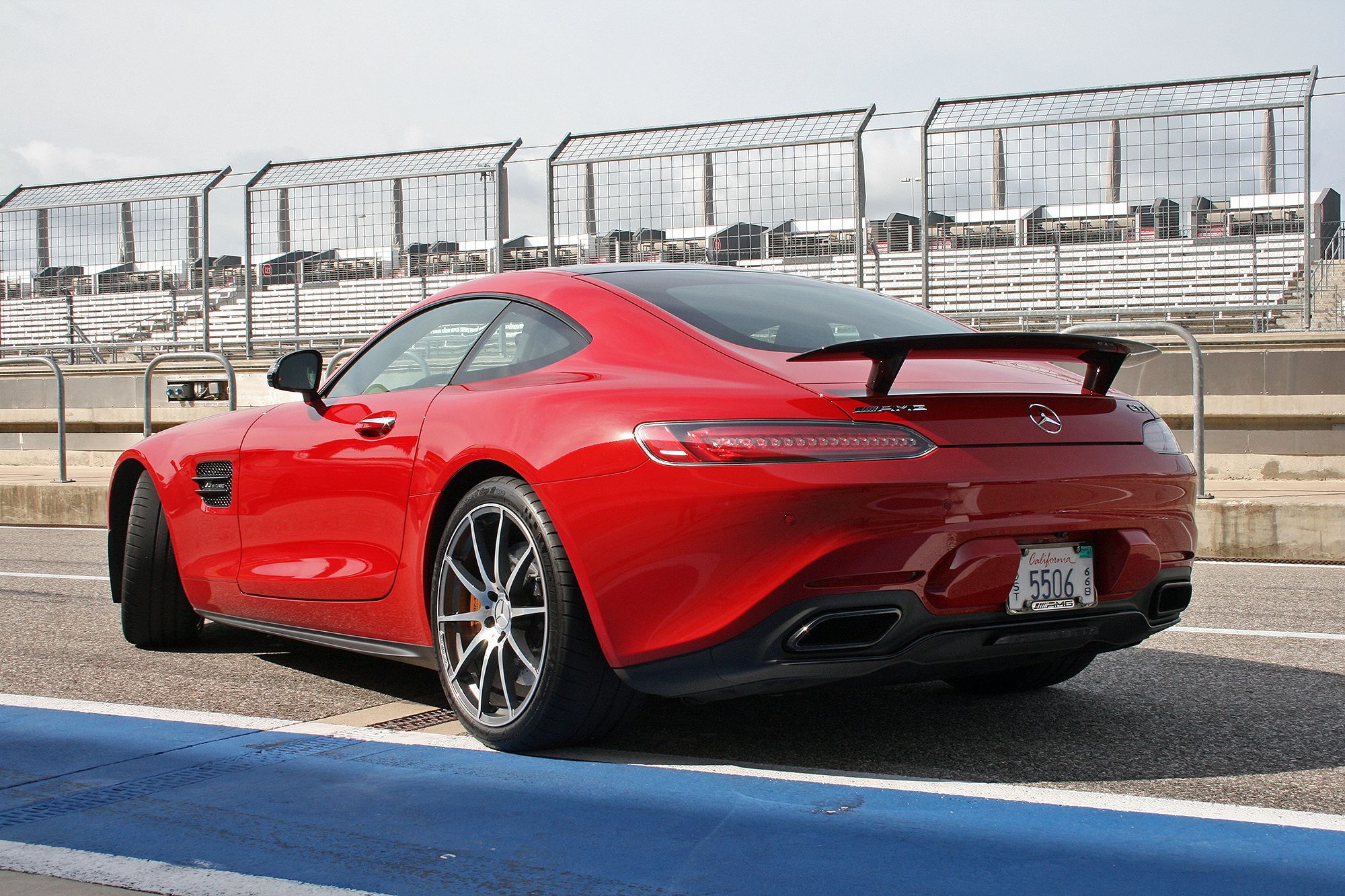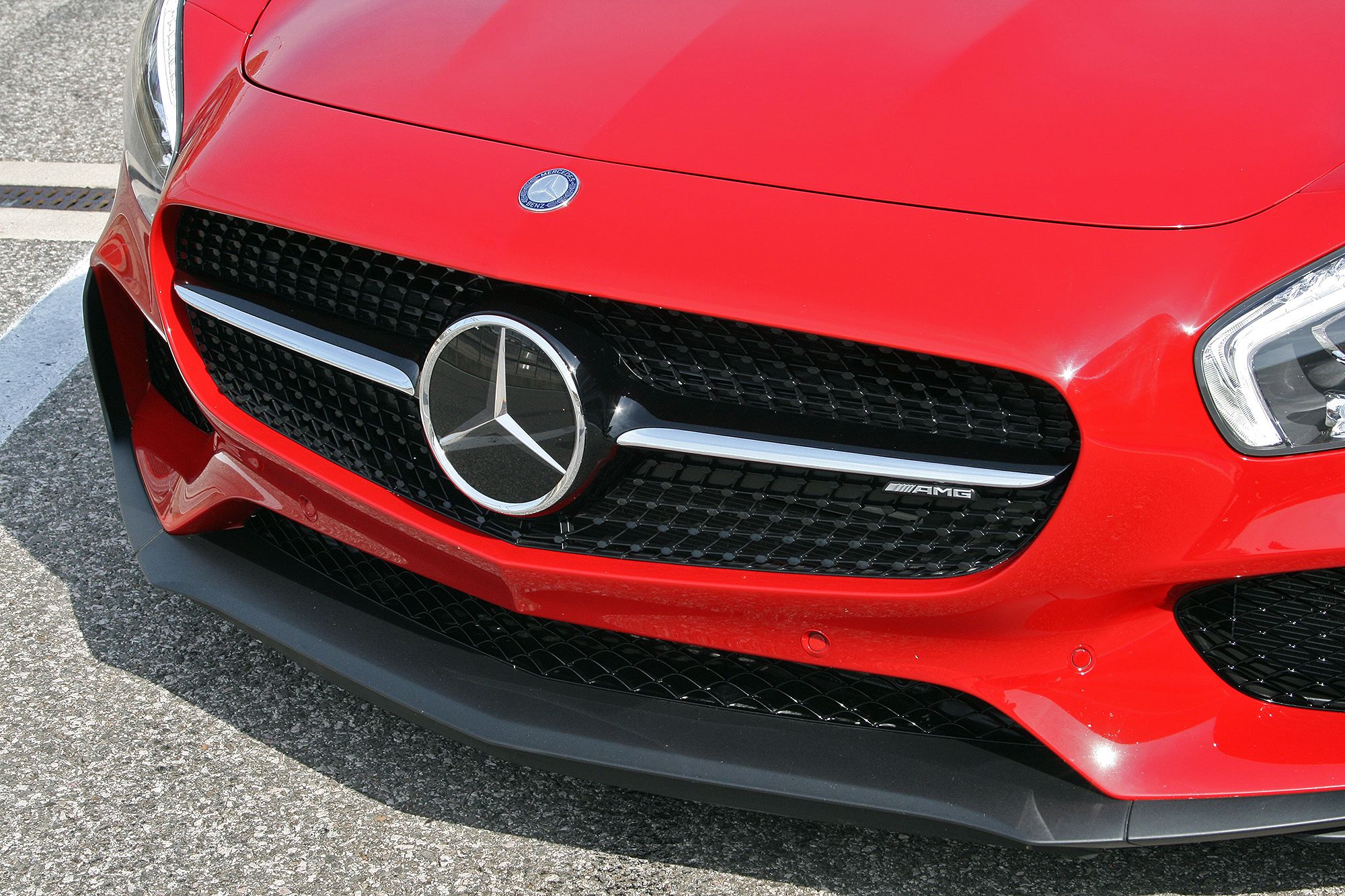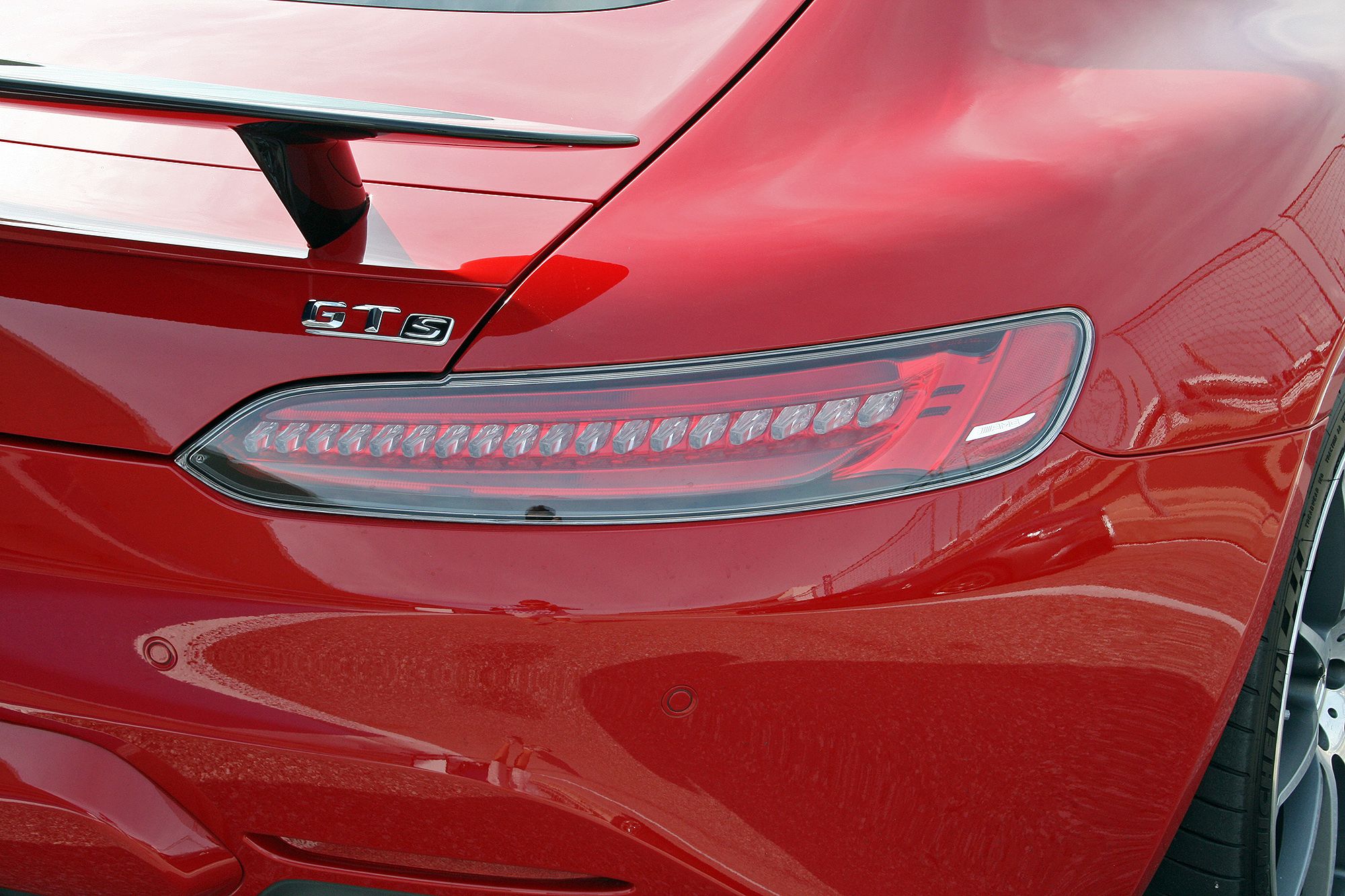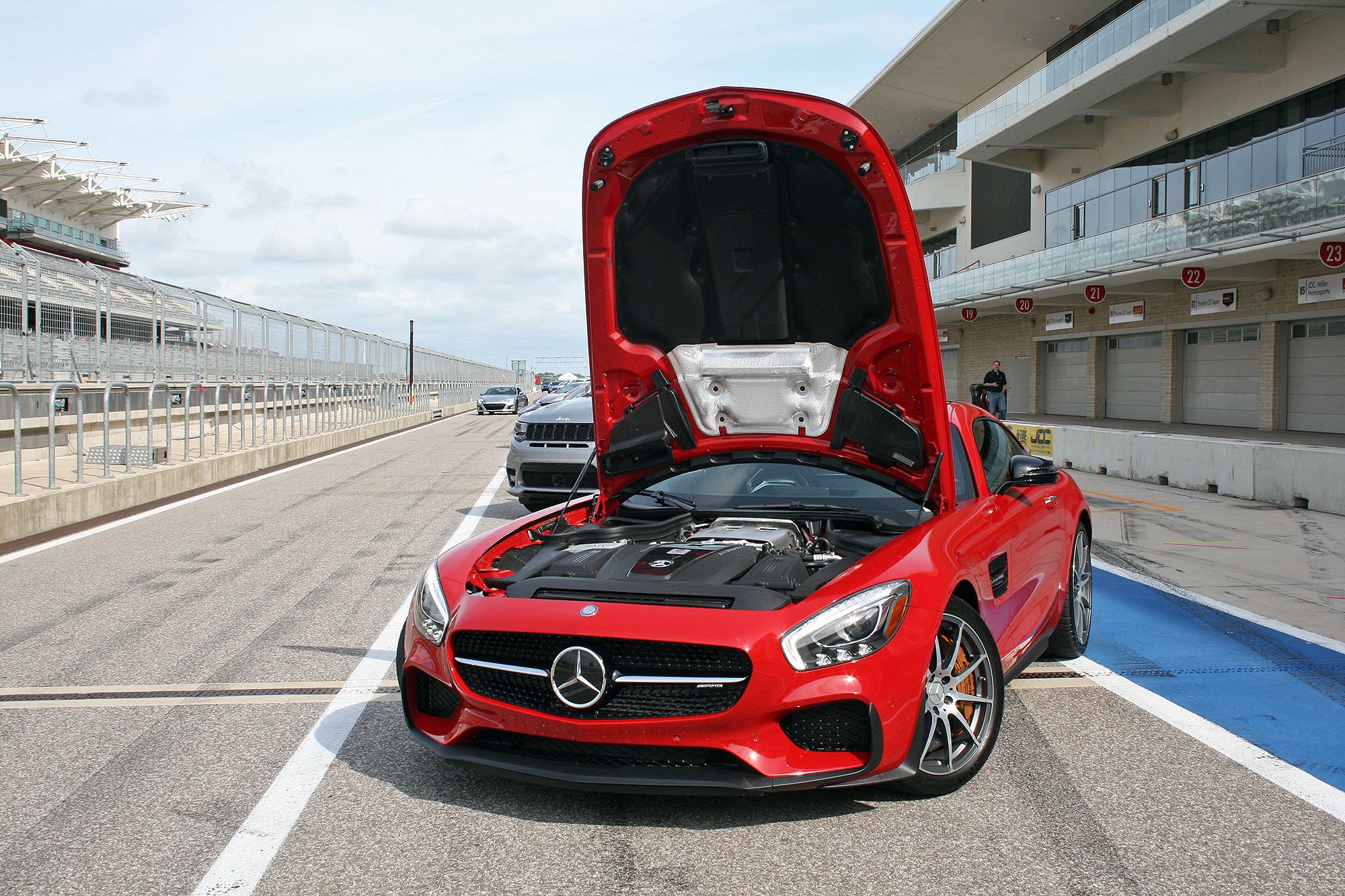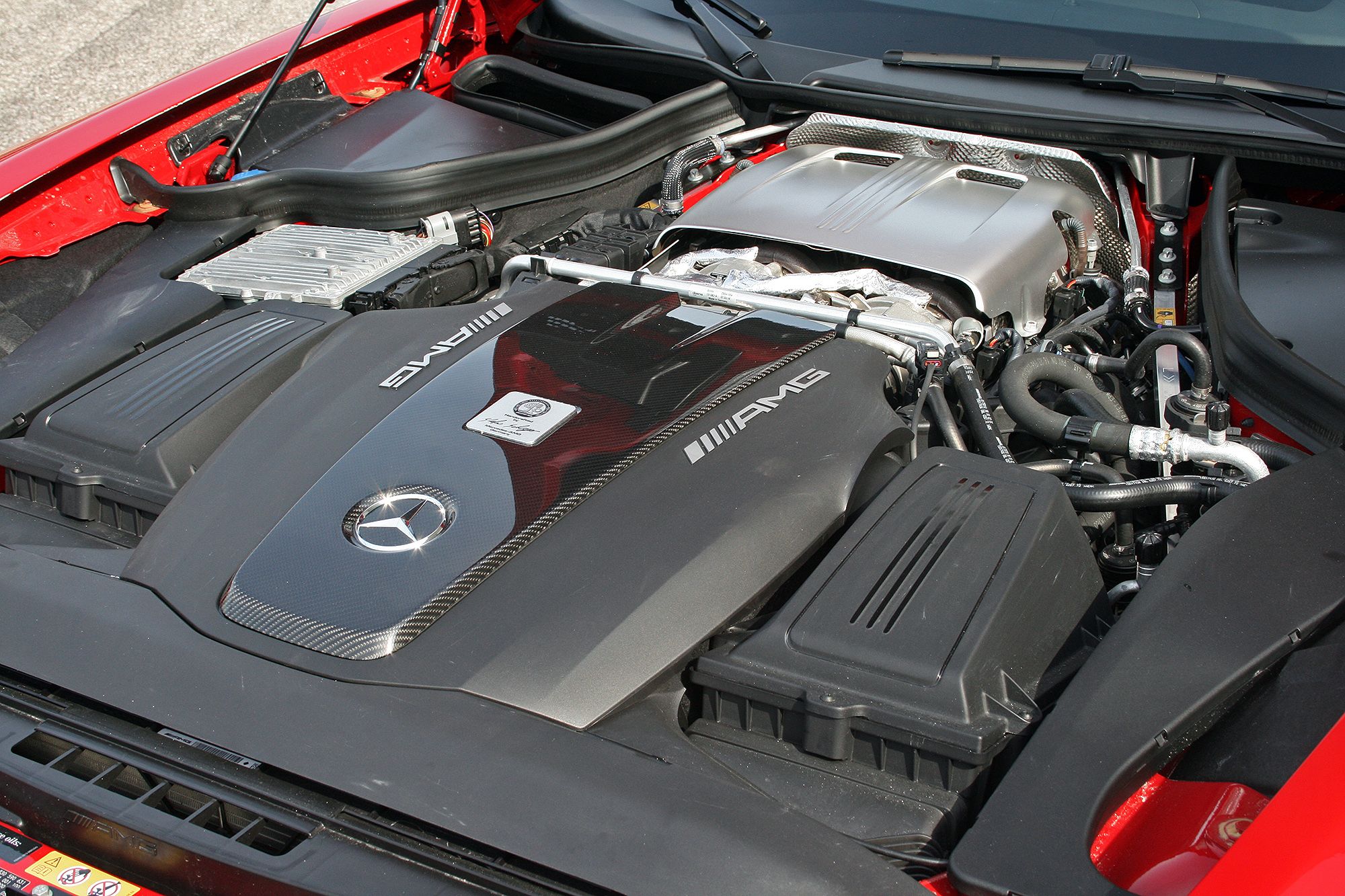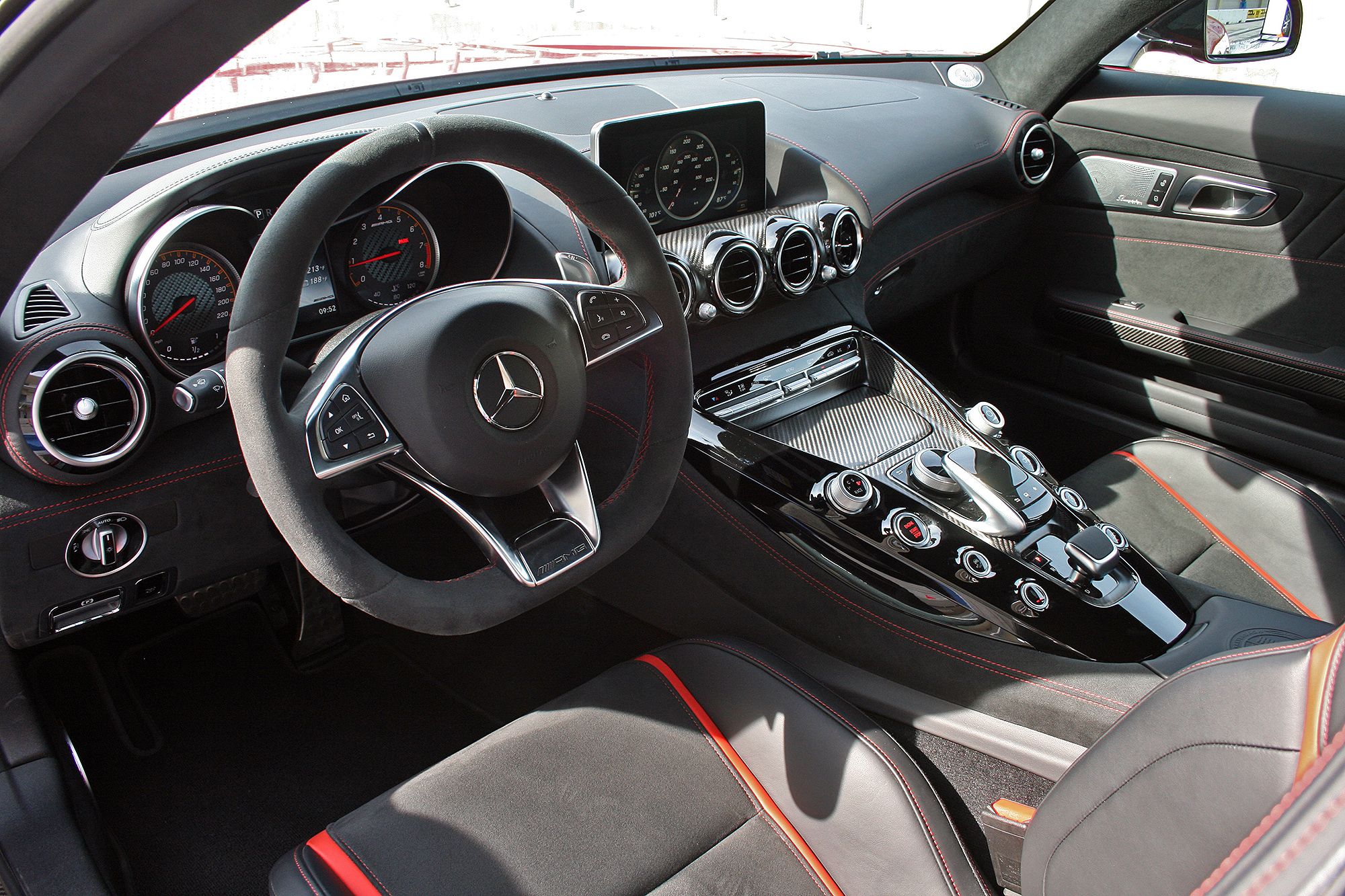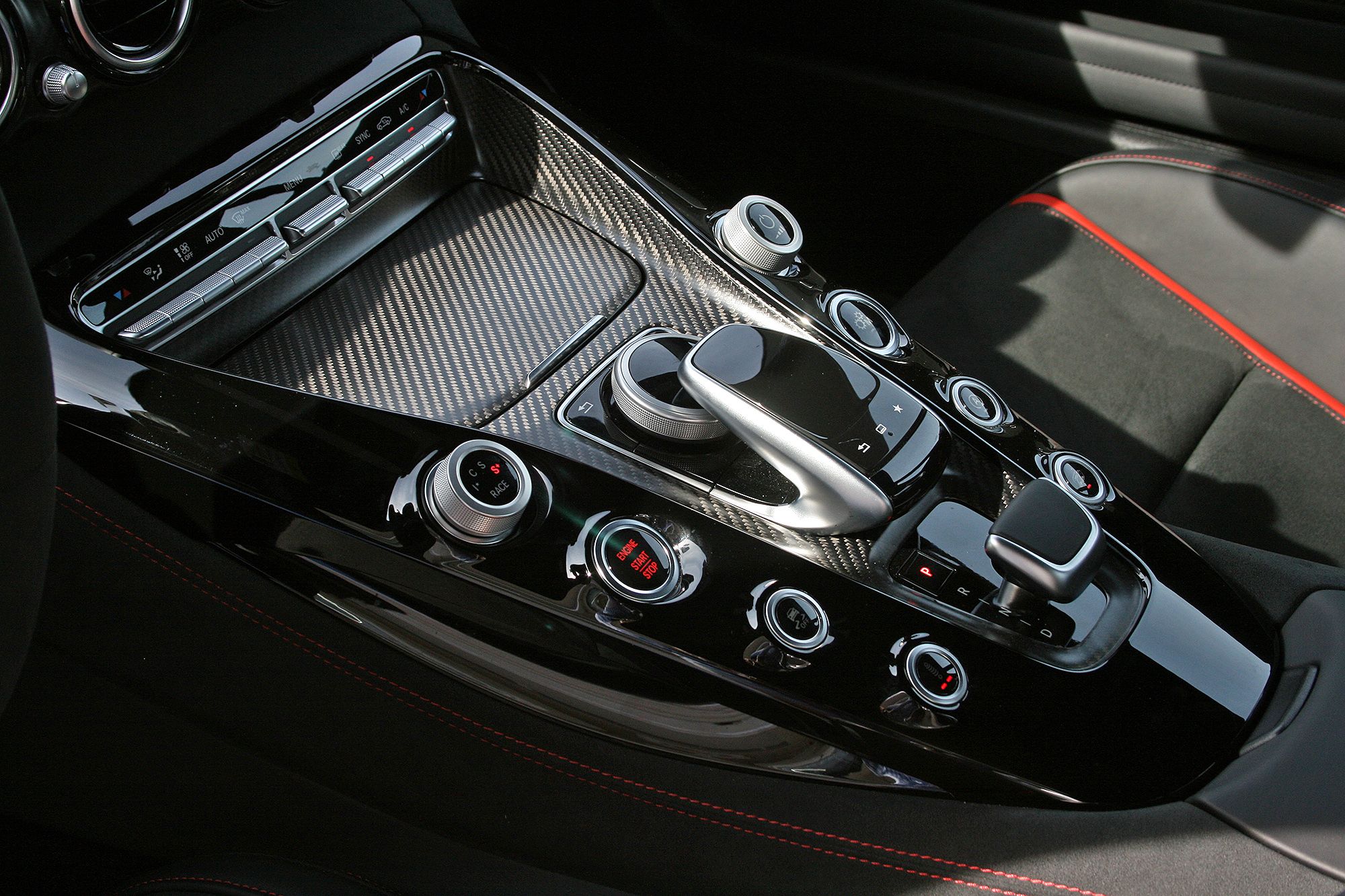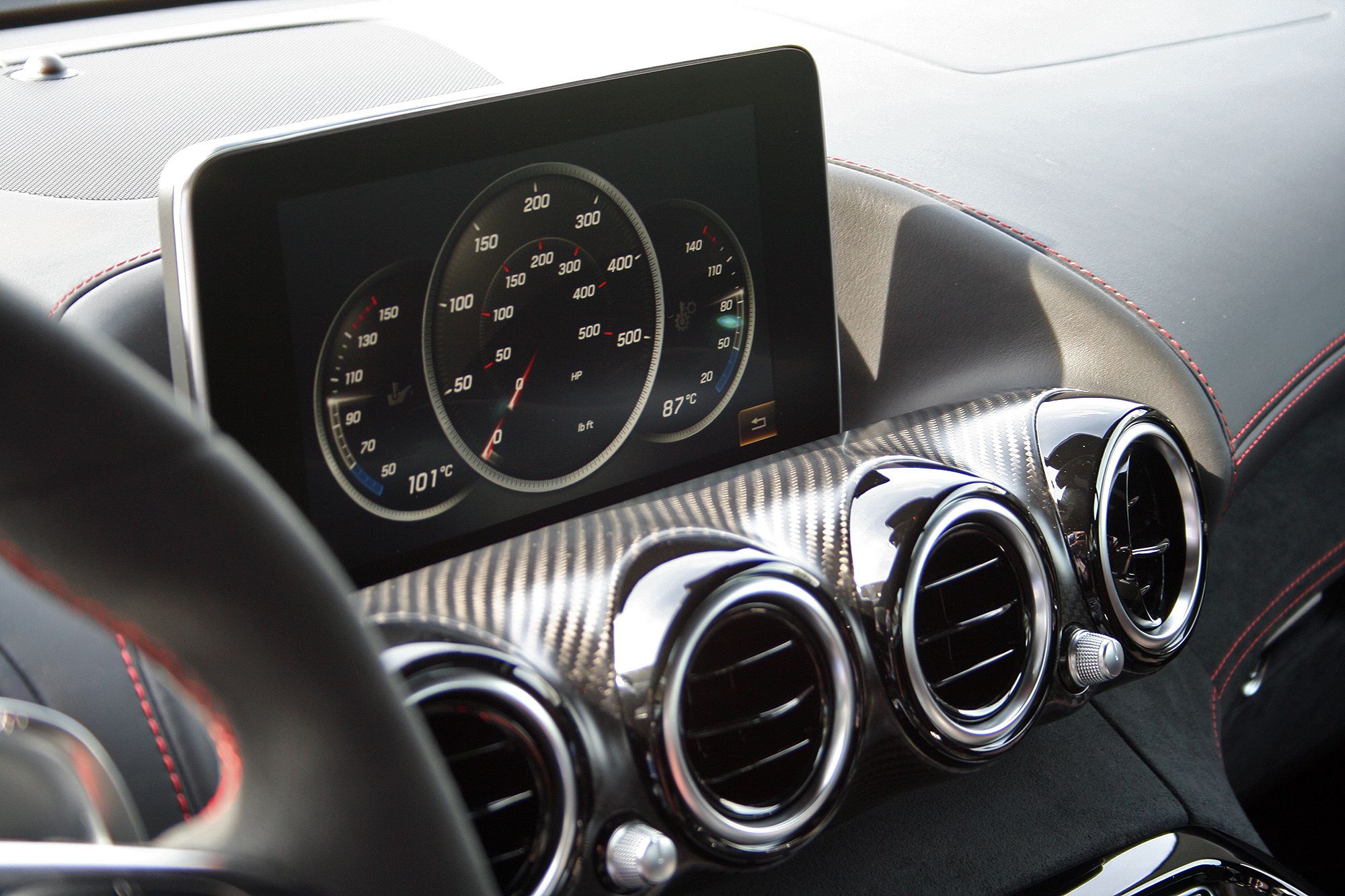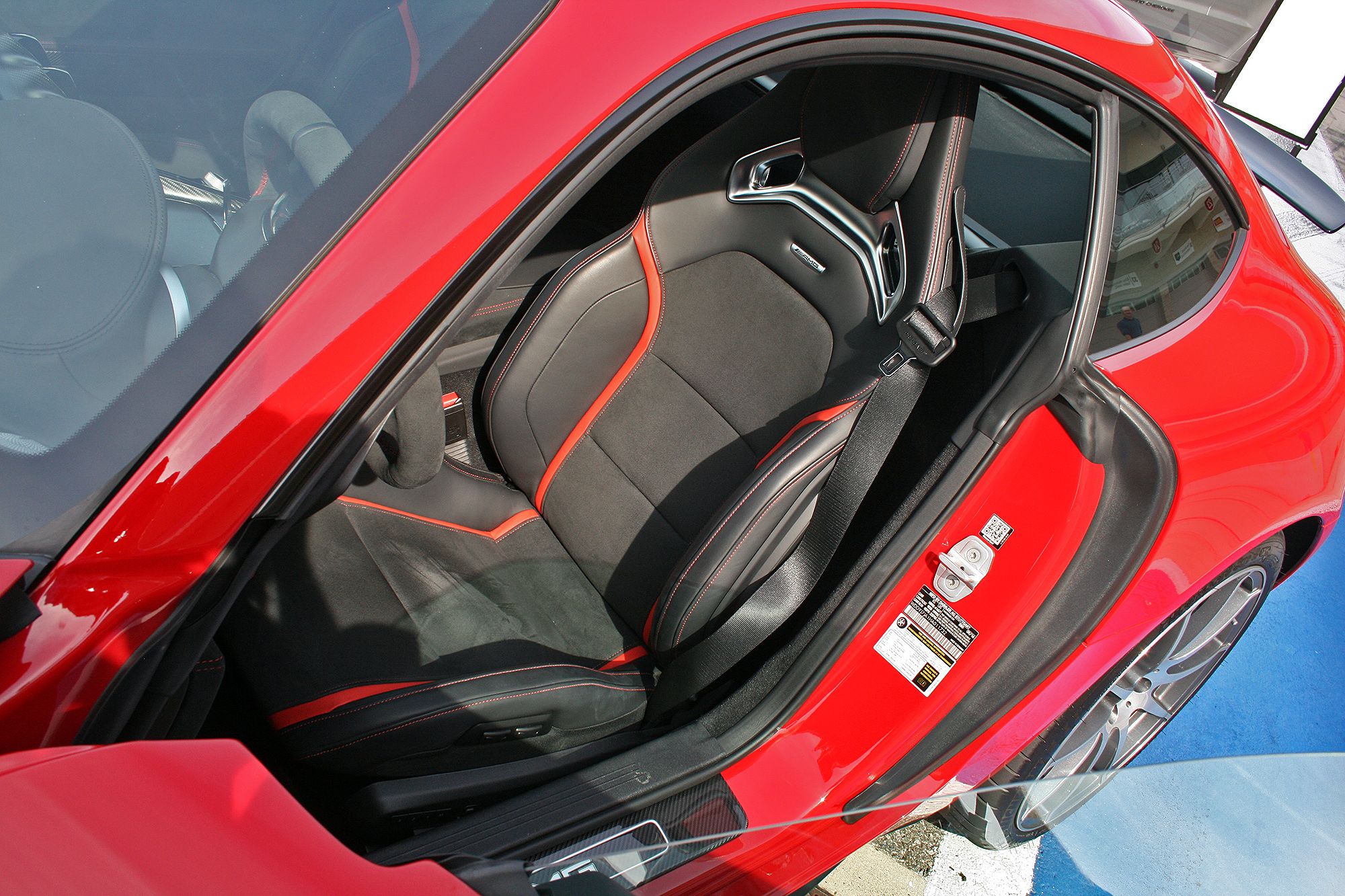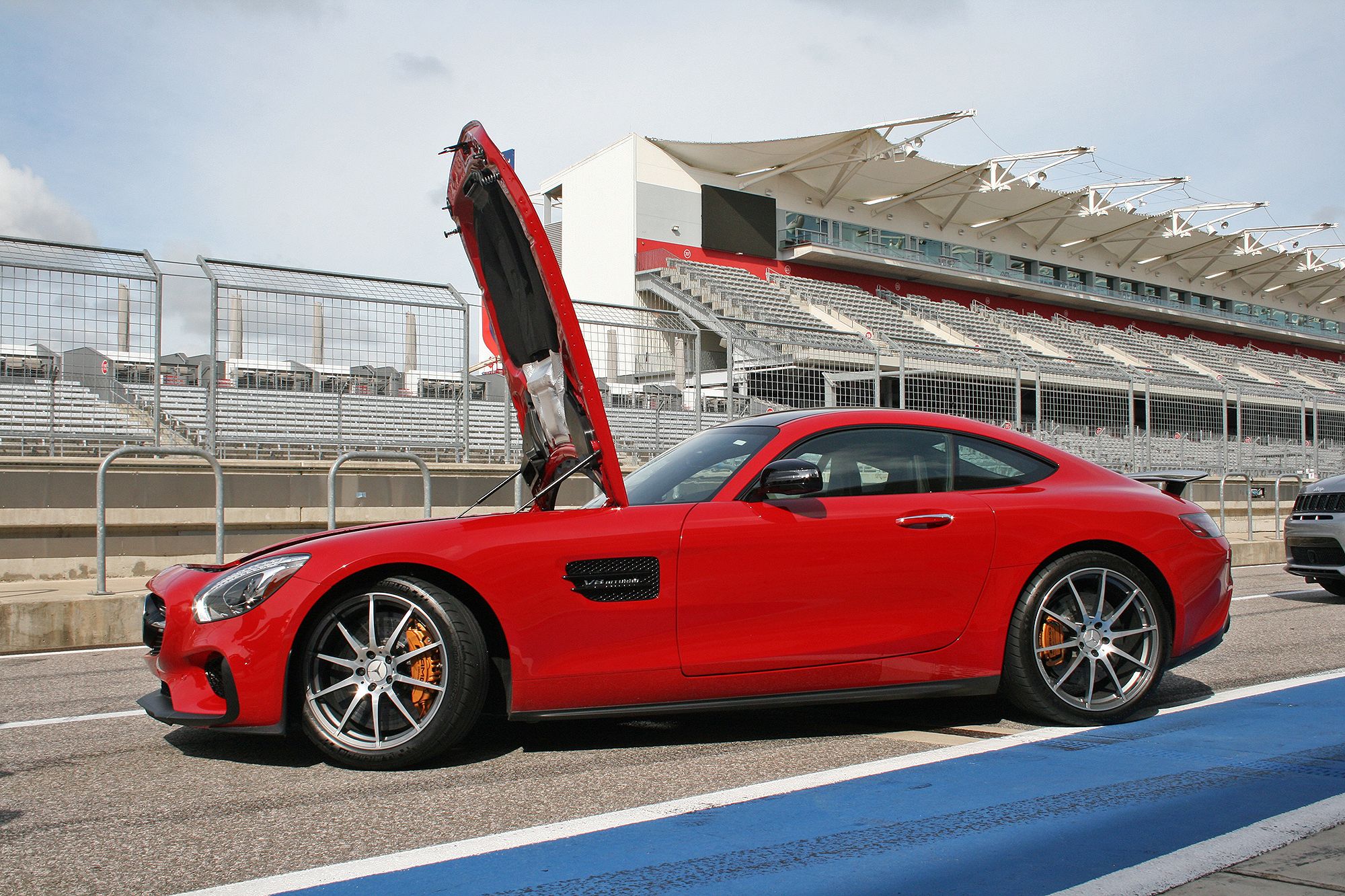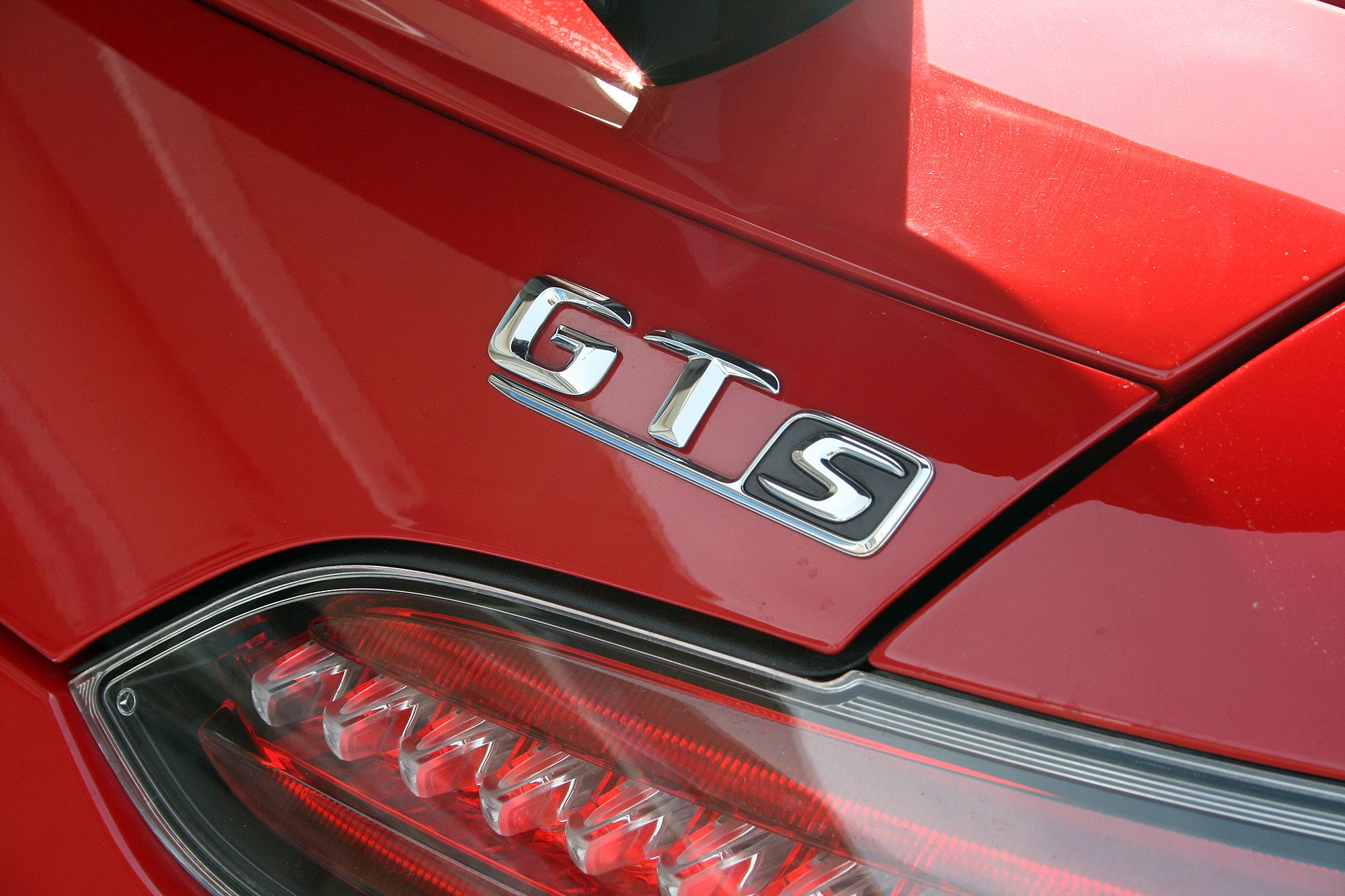The Mercedes-AMG GT has only been around since 2016, so most would still consider it a new model. Nothing changes for 2017, either, but that’s just fine. The GT can be had in three forms: GT, GT S, and GT R. No, not Nissan’s GT-R; take note of the missing hyphen. Regardless of trim, the GT represents Mercedes-AMG’s hottest and most potent model. It’s certainly a worthy successor to the SLS AMG and its gullwing doors. I recently got behind the wheel of the 2017 GT S at the famed Circuit of the Americas Formula One track outside Austin, Texas during the Texas Auto Writers Association’s Springtime Auto Roundup. A quick lap around the 3.4-mile course is all it takes to solidify the GT S a something well beyond the average sport coupe.
See, the GT S gets a healthy 47-horsepower boost over the standard GT, giving it a full 503 horses at 6,250 rpm. The power comes from Mercedes-AMG’s hand-built, 4.0-liter biturbo V-8. The torque figure isn’t a letdown, either, at 479 pound-feet. All this in a coupe weighing less than 3,700 pounds. As you can imagine, performance is next-level. The sprint to 60 mph only takes 3.7 seconds despite only the rear wheels putting down traction, and its top speed lives just short of 200 mph. What’s more, Mercedes-AMG brought a fully loaded GT S to sample – fitted with AMG Dynamic Plus Package, the AMG Aerodynamics Package, and the AMG Carbon-Ceramic brakes. This trifecta of add-ons give the GT S a huge advantage on the racetrack. So how’d it handle? Keep reading to see.
Continue reading for the full review.
First Impressions
The 2017 Mercedes-AMG GT S was the star of the event. Even jaded journalists used to driving exotics and performance iron couldn’t stop ogling over the Benz’s long hood and Alcantara-line cockpit. And who’s to stop them? The GT S certainly warrants the attention. Most owners aren’t likely pounding their $190,000 supercar on the track, but rather driving along some boulevard on the swanky side of town. The GT S’ head-turning ability is likely a huge factor for most purchases.
Walking up to the car, you realize just how short the GT S is compared to the average person. I’m not the tallest guy in the world, yet it comes only belly high. Conversely, the long hood seems like it could swallow an NBA player with ease. Mercedes-AMG designed it that way. The long nose and short front overhang puts the 4.0-liter V-8 behind the front axle, technically making it a mid-engine car. Thought the all-aluminum engine isn’t all that heavy, relatively speaking, its centered mass gives the GT S a more balanced character on the track. Just let this soak in: both the V-8 and passengers are inside the GT S’ 103.5-inch wheelbase.
Popping the hood reveals its outrageously wide opening angle. It’s almost 90 degrees in relation to the fenders. The result is an unobstructed view of the engine bay and its components – or at least what isn’t hidden by plastic covers. The front cover that looks like it should reside over the engine is actually the air intake system. Two large air boxes with their own air filters feed air into the turbos. Both turbos are mounted directly on top of the V-8 in a hot-V configuration. This makes for a visual feast, along with almost zero turbo lag. A metal heat shield covers the turbos and most of their plumbing, however. Compartments on either side of the engine house components like the master cylinder, ABS components, battery, and ECU.
Mercedes-AMG then uses a torque tube to send engine power to the rear-mounted, seven-speed transaxle. The GT is hardly the first sports car to use a rear-mounted transmission, but the advantage is clear. The location provides a more even distribution of weight between the front and rear axles. Mercedes says the GT has a 53/47-percent weight distribution front to rear. How does that translate on the track? Glad you asked.
Behind the Wheel
Open the long door and fall into the heavily bolstered, Alcantara-covered driver’s seat. Pull the door closed. Instantly, you feel cocooned inside the GT S’ deep interior. The massive center console rises high between the seats, making it feel more like a cockpit than a cabin. Buttons line the sides of the console and require a lifted elbow and forearm to reach, especially those on the passenger side. Press the Star/Stop button and the twin-turbocharged V-8 roars to life with a ferocious blat from its dual exhaust. Grab the suede, flat-bottomed steering wheel and rock the electronic shifter into D.
The Mercedes-AMG GT S rolls easily at crawl, hiding its true potential. As I pulled up to the starting line just off pit road, COTA’s 130-foot hill loomed ahead with Turn 1 waiting at the crest. Matting the throttle results in a tremendous rush of acceleration and noise. The big V-8 begins breathing through both nostrils and boost reaches the cylinders almost instantly. Even below 6,250 rpm where peak horsepower lives, the 4.0-liter feels every bit a 500-plus horsepower monster. Much of that can be contributed to the flat torque curve between 1,750 and 4,750 rpm. Mercedes somehow coaxes all 479 pound-feet to stay strong during that entire time.
Arriving at the apex of Turn 1 in what felt like seconds, I mashed the brakes with authority. The massive, two-piece carbon-ceramic rotors responded with the same. The 15.8-inch front and 14.2-inch rear rotors capped with huge calipers do an excellent job at scrubbing the Mercedes’ speed. Squeaky pads and $8,950 are the trade-offs, but for dedicated track days, the optional brakes are hard to beat. Accelerating out of Turn 1, the torque again shows its beautiful face, launching the car forward without screaming revs. The baritone exhaust snaps that familiar AMG crack as the dual-clutch transaxle fires off shifts with the utmost precision.
The twisties of Turn 3 through Turn 6 are a cakewalk for the GT S. Body roll is nowhere to be found as the car simply dances from apex to apex. Even hitting the ribbed apexes doesn’t phase the GT S’ three-stage active suspension. The cabin is also perfectly isolated from unwanted sounds while still allowing plenty of exhaust growl into to permeate the leather and suede. The speed-sensing dynamic power steering is also perfectly at home here. It’s nicely weighted and delivers plenty of feedback from the front tires. Further helping the GT S’ cornering abilities is the electronic limited-slip differential. Its computer determines which wheel should receive power and at what time. Mercedes says this helps raise cornering speeds at the limit. And while I’m pushing the car, I hardly reached its limits.
There is no doubt the Mercedes-AMG GT S is a monster on the racetrack. But Mercedes also designed the GT S to be a comfortable Gran Touring car – hence the name. Slip the AMG Dynamic Select and dual-clutch automatic into Comfort modes, and the GT S becomes as soft as a purring kitten. Dynamic mounts hold the engine and transaxle in place and alter their firmness to match the drive mode. The Magnetorheological fluid-filled couplers help isolate the cabin from drivetrain vibrations in Comfort mode. Sport, Sport+, and Race modes get a firm connection between the drivetrain and the aluminum spaceframe that holds the GT S together.
The cabin, while cozy, is a wonderful place to spend time. The seats are comfortable yet supportive. Visibility isn’t terrible despite the thick C-pillar. Blind spot monitoring and a high-resolution backup camera certainly help. For long drives on boring roads, the available Lane Keeping Assist helps steer the car within the lane. Should the impossible happen and the driver become sleepy behind the wheel, the GT S’ Attention Assist will suggest it’s time for a break. As such, the GT S proves it’s not a one-trick pony, but rather a sports car that is easy to live with. Interested customers only need deep pockets.
The 2017 Mercedes-AMG GT has a starting price of $111,200. Opting for the GT S version like my tester will cost $131,200 before any options. And as mentioned, my tester was hardly a stripped model. Its 10-spoke wheels add $1,200; the panorama roof costs $1,260; the carbon fiber door sill trim brings another $1,200; and the Burmester sound system costs $4,500. And that’s without touching the performance add-ons. The AMG Aerodynamics Package adds $2,850; the AMG Dynamic Plus package costs $2,600; the Lane Tracking Package with blind spot monitoring and lane keep adds another $875; and last but not least, the AMG Carbon-Ceramic brakes add $8,950. That brings the total estimated cost of my tester to $160,000.
Conclusion
In reality, the sticker price isn’t terribly out of line when considering the GT S’ competition. Vehicles hailing from Lamborghini, Ferrari, and McLaren all cost far more. Of course, there are lesser options like the Chevrolet Corvette Z06, Porsche 911, and Jaguar F-Type R. At the end of the day, it all comes down to taste and personal preference. I’ll leave you to decide what you’d rather be seen driving, but know this: the 2017 Mercedes-AMG GT S is a fantastic machine that’s far more capable than 99 percent of its owners will dare explore. Its combination of brutish power and over-the-top technological wizardry will carve a deep spot in even the most jaded heart.

